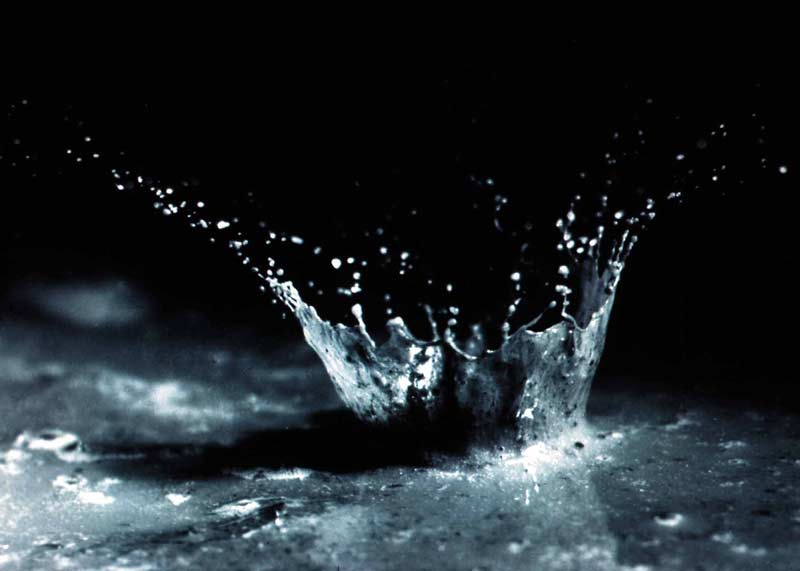Have you ever noticed a distinct, earthy scent in the air right before a rainstorm? That familiar smell, often described as fresh or musky, isn’t just a figment of your imagination. It’s a real, scientifically explainable phenomenon that stems from a combination of atmospheric chemistry, soil bacteria, and electrical activity. In this article, we’ll explore why you can smell rain and what causes this fascinating pre-rain aroma.
The Science of Petrichor: The Earthy Smell After Rain

One of the primary reasons we can smell rain is due to a phenomenon known as petrichor. This term was coined in 1964 by two Australian researchers, Isabel Bear and R.G. Thomas, who studied the scent associated with rain hitting dry earth. Petrichor results from the release of oils and organic compounds that accumulate on the ground during dry periods. When rain falls, these compounds mix with moisture and are carried into the air, creating that fresh, earthy smell many of us love.
These oils are released from plants and absorbed by soil and rocks during dry spells. When the first raindrops hit, they displace the oils, causing them to rise and create the unmistakable scent of petrichor. The effect is especially noticeable after a long period of drought, which allows these compounds to build up.
Ozone: The Sharp Scent Before a Storm
Have you ever noticed a sharp, almost metallic scent in the air just before a thunderstorm? This smell is due to ozone, a molecule made up of three oxygen atoms (O3). Ozone is generated when lightning or other high-energy electrical discharges split oxygen molecules (O2) into individual atoms, which then bond with other oxygen molecules to form ozone.
Ozone has a pungent, clean scent, often likened to the smell of fresh linens. It can be carried by wind from the upper atmosphere to ground level, where we can detect it. This smell, often combined with petrichor, adds to the unique sensory experience of a coming rainstorm.
Geosmin: The Earthy Smell of Wet Soil
Another key player in the scent of rain is geosmin, a chemical compound produced by soil-dwelling bacteria called actinomycetes. When soil is dry, these bacteria release spores into the air. Rain disturbs the spores, releasing geosmin and creating an earthy smell.
Geosmin is incredibly potent; our noses are highly sensitive to it, and even tiny amounts can be detected. This compound is also responsible for the musty taste in drinking water and certain vegetables, like beets. When it rains, the disturbance of soil causes geosmin to be released into the air, adding another layer to the complex aroma we associate with rain.
Why Some People Are More Sensitive to the Smell of Rain

While many people can detect the scent of rain, not everyone experiences it in the same way. Sensitivity to the smells of petrichor, ozone, and geosmin can vary based on individual factors like genetics, age, and overall health. Some people have a heightened sense of smell and can pick up on these scents more acutely, while others may barely notice them at all.
Interestingly, researchers believe our ability to detect these scents might have evolutionary roots. The smell of rain often signals the replenishment of water sources, an important survival cue for early humans and animals. The heightened sensitivity to these smells could have helped our ancestors find water and fresh vegetation after a period of drought.
How the Smell of Rain Affects Ecosystems

The smell of rain doesn’t just impact humans—it plays an important role in the behavior of various animals and ecosystems. For example, certain species of desert-dwelling frogs rely on the smell of approaching rain to trigger their breeding cycles. Earthworms, which are usually hidden underground, will often surface during rain, likely drawn by the fresh scent of moist soil.
Plants, too, respond to the onset of rain. The oils released during dry periods may help protect them from water loss, and the rain signals that conditions are becoming more favorable for growth. In many ways, the smell of rain is an indicator of nature’s balance, bringing life and sustenance back to the land.
Our Deep Sensory Connection with Nature
The ability to smell rain reminds us of our deep-rooted connection to the natural world. In an age where many of us spend most of our time indoors or in urban settings, this subtle sensory experience is a reminder that we are still linked to the rhythms of the Earth. It’s one of those rare moments when we become more aware of the environment around us and our place within it.
While technology has certainly distanced us from many natural processes, our senses continue to provide us with clues about the world we inhabit. The smell of rain is just one example of how our bodies respond to environmental changes, offering us a window into the complex interactions between chemistry, biology, and weather.
Conclusion: The Magic of Smelling Rain

The scent of rain is more than just a passing fragrance—it’s a blend of scientific processes that connect us to nature in a profound way. From the oils that create petrichor to the sharp tang of ozone and the earthy scent of geosmin, the smell of rain is the result of a delicate dance between the elements. It’s a sensory reminder that, despite all of our technological advancements, we are still deeply connected to the natural cycles that govern life on Earth.
So, the next time you catch a whiff of rain in the air, take a moment to appreciate the intricate processes that come together to create this unique smell. It’s a scent that not only brings us closer to nature but also highlights the incredible complexity of the world around us.


